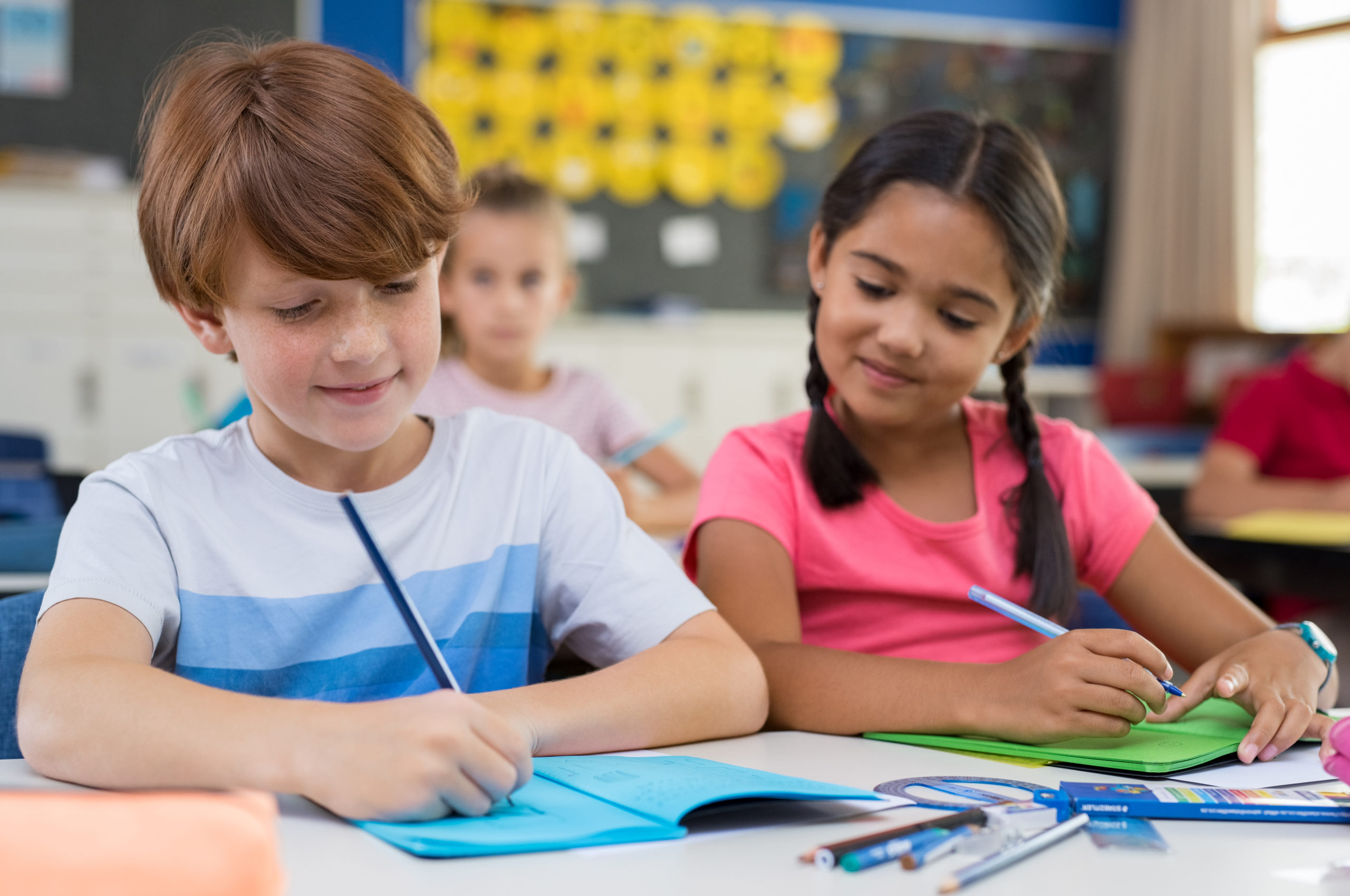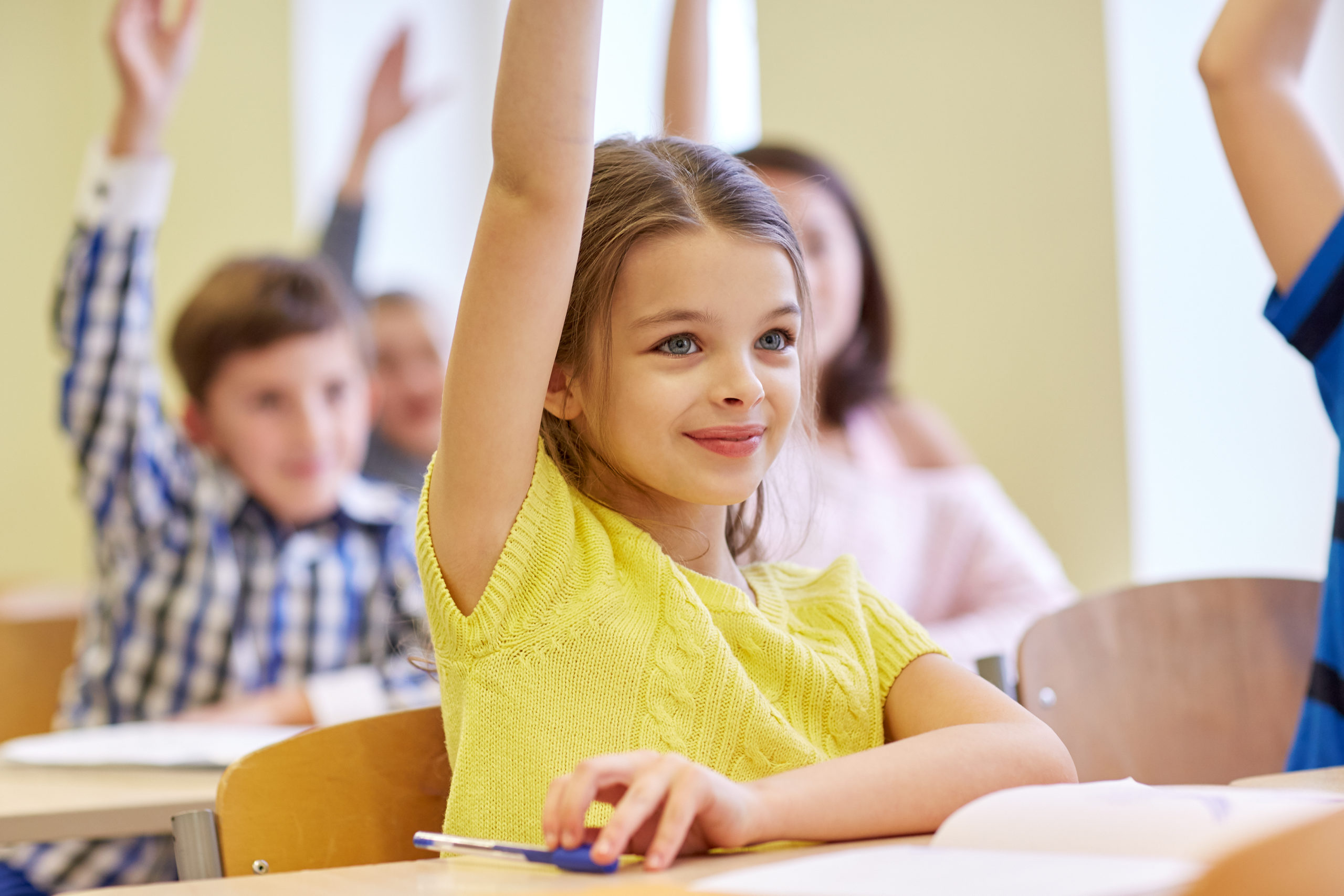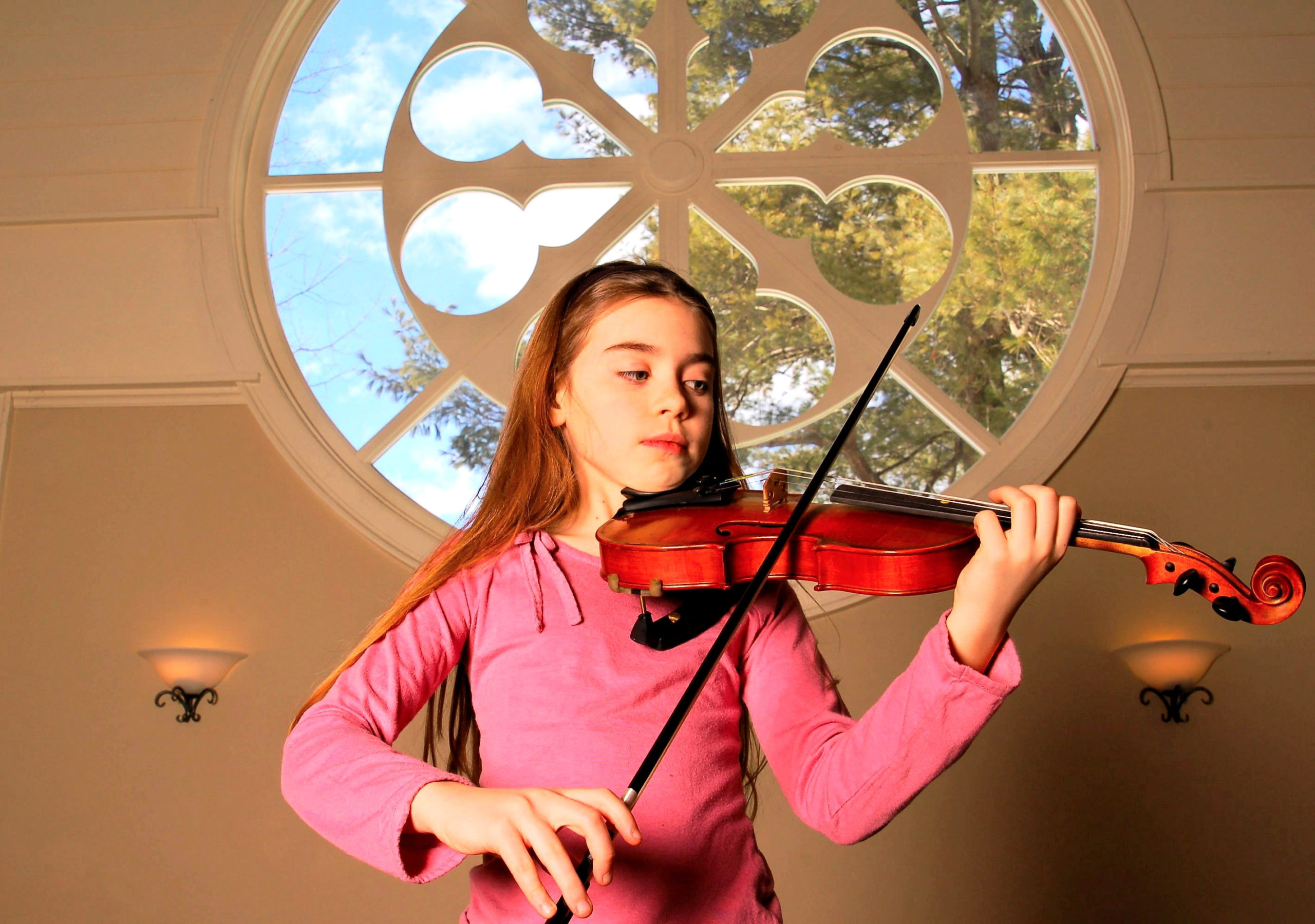Elementary
A full-time elementary program through grade 5, our curriculum offers a multicultural education taught through the immersion approach. At this level of our program, students learn to read and write in French and are encouraged to speak French exclusively in the classroom. The immersion experience leads children to a more flexible way of thinking and gives them an appreciation for nuances of meaning. As a result, our students experience success in all subject areas.

English Language Arts
English Language Arts studies begin formally in second grade, although many concepts learned in previous years in the French curriculum are transferred naturally to English. For example, the process of learning to read phonetically is relevant in both languages. Children have already learned to break words into syllables and have mastered the sound-letter relationships before taking English Language Arts. We observe that most children have learned to read naturally in English by applying these standard reading rules to their first language without even realizing it. English class then becomes a means of confirming concepts and usage, drawing parallels, and identifying contrasts. As a result, skills are reinforced from both the French and English curriculum and studies, providing children with a solid foundation. Our English Language Arts Teacher coordinates closely with the Classroom Teacher to ensure cover all lessons without duplication. Students learn spelling rules, grammar, and creative writing in English Language Arts classes. The reading program uses historical fiction books to incorporate U.S. History and Maine history, which are not part of the French curriculum. Other reading units include Greek Mythology, biographies, inventors, Roald Dahl books, poetry, and more. Interestingly, in English class, students also learn English math terminology, American money, measurements (British system), and long division using the American method. This way, even though our students predominantly use the metric system, they are familiar with both systems.

Math, Technology, and Sciences
By the end of fifth grade (CM2), students will have studied addition, subtraction, multiplication, and division using integer numbers. They develop a wide range of mental procedures and can use the calculator when appropriate. They have a beginning understanding of decimals, fractions, and ratios. Also, problem-solving becomes a central part of the curriculum. In geometry, the French curriculum gives students the basis to follow a geometry course in Middle School. The important notions of area and perimeter are also introduced during elementary grades. Students develop the scientific method approach to investigating their environment. Science is taught in French. In English class, classroom projects re-use the concepts learned. This program fulfills the requirements of both the French and American systems. Themes taught include life science in third grade, matter and electricity in fourth grade, and the human body and energy in the fifth-grade environment. The themes covered in first grade are the human body (bones and muscles) and seeds and plants, and in second-grade, air, water, and the three states of matter, according to the requirements dictated by the French and American curricula.

French
In the elementary grades, students continue to improve their French language speaking skills, and the students converse freely in French in classroom discussions with an increasingly rich vocabulary. There is an added emphasis on written French, including a formal study of French grammar, spelling (dictation), and French reading. The students read French books and poetry of varied genres, and subject matter textbooks are also in French. French is the language of instruction for the content areas of mathematics, sciences, history & geography. Through the context of the core subject areas and enrichment classes in art, music, and physical education, all taught in French, the students develop a precise vocabulary and explicit understanding of the French language, which they utilize in context with ever-growing ease.

Music Arts and Suzuki
At its inception, the school’s vision centered upon the relationship between music education and the immersion process of learning a second language. They are partners in a full education. Though the national trend is to reduce this component of education, we believe that a strong music art curriculum lays the foundation for strong mathematical and scientific intelligence. All grade levels at L’Ecole Française du Maine are immersed in our Music Arts Program, which includes Music Mind Games, the Choral Program and an opportunity for private Suzuki lessons.
Music Mind Games: This is a method of teaching music theory and appreciation through non-competitive, imaginative games. Starting in Pre-K, weekly instruction teaches beginning to advanced music theory concepts, including the musical alphabet, intervals, reading rhythms, rhythm math, dictation, the grand staff, musical symbols, tempos, scales, key signatures and chords. Innate in the Music Mind Games method is a duel respect for student’s intelligence and the logical organization of music theory.
Suzuki Program: The immersion method is Listen and Learn. The Suzuki method is the same. We’re proud to work in collaboration with the Maine Suzuki Association to offer our students private, on-site Suzuki lessons in piano, guitar, violin and cello. Parent involvement is required for private lessons.
Choral Program: Our school “Chorale,” comprised of all students, practices weekly with our Chorus leaders and accompanist. The “Chorale” often performs during our monthly school community events, which are a key component of the music program. These community performances may also include musical pieces from Suzuki students, and general songs, dances and skits.

Physical Education
L’Ecole Française du Maine incorporates the benefits of our natural setting into the fabric of our students’ education. The playground and the outdoor campus are as much a part of the learning environment as the indoor classrooms. We put a high value on the play experience and the multiple benefits of daily exercise, and we recognize that the socialization of recess teaches important life lessons about respecting and supporting one another. Throughout the school year, students participate in physical education classes that include a variety of activities and games that promote gross motor development. Families are frequently invited to join us on outings such as ski trips to Sugarloaf, ice skating gatherings and biking trips at Wolfe Neck Park and Campground. Best of all, the surrounding woods and nearby nature preserves and seashore provide opportunities for impromptu explorations.

Visual Arts
Our school views the arts as a fundamental part of cultural and language education. Integrated with the curriculum, visual arts projects and techniques are discovered in concert with what is typically seen as academic subjects. In the elementary years, our goals are for the children to be capable of expression through a variety of techniques in drawing, as well as in other two- and three-dimensional media. They learn the experience of creating, reflecting upon others’ images, exploring the differences and similarities between works, and discussing their personal point of view.
We teach skills such as choosing and mixing materials, mediums, and subjects, utilizing the tools available, and synthesizing instructions with personal methods. To put techniques in a historical context, we investigate great works through trips to museums, visiting artists and events in the arts world. We teach the children to look for commonalities and differences between the practical experiences of the classroom and the varied approaches of artists.
